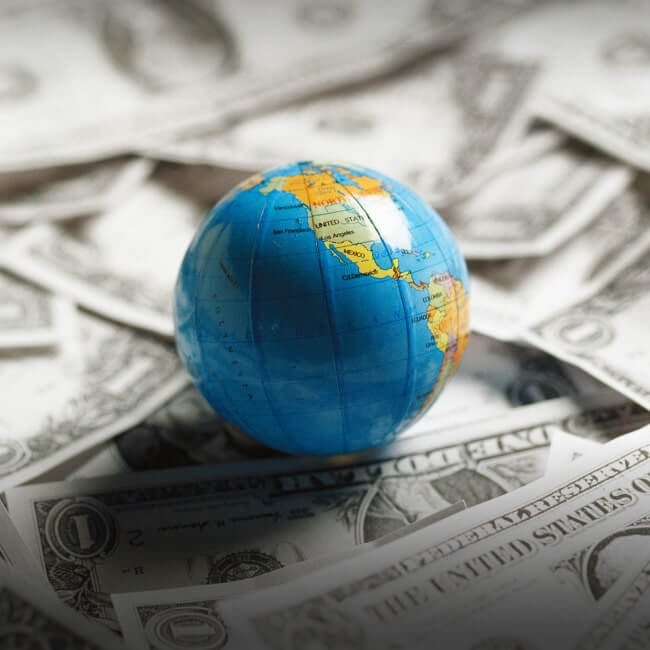Macro Watch: Chile GDP and key rate, Jamaica inflation

Chilean GDP growth accelerated in the second quarter, the central bank said on Friday.
GDP expanded 0.9% year-on-year compared with 0.1% in Q1, when a strike at the Escondida copper mine, the world's biggest, curtailed output of the key revenue-generating commodity.
Chile's copper output for the first half of the year was down 9.0% y-o-y to 2.52Mt.
The economy's internal demand increased 3.9%, with household consumption growing 2.6% and government consumption 2.7%. However, investment and exports contracted, by 4.1% and 3.5%, respectively.
"While today's data are largely positive, the renewed weakness in investment reinforces our view that the recovery is likely to be weaker than most expect and we remain comfortable with our below-consensus forecast that the economy will grow by just 1.2% over this year as a whole," London-based research firm Capital Economics said in a report.
Chile's government expects the country's economy to expand 1.5% this year. The figure is down from a previous forecast of 2.25% made in 2016. Last year the Chilean economy - hit by lower commodity prices - expanded 1.6%, its slowest pace since 2009.
***
Chile's central bankers held the key rate steady at 2.5% for the third month in a row.
In a statement, the bank cited favorable external conditions and growth in commodity prices.
The research unit of the local subsidiary of Spanish banking giant Santander said the central bank, in the short term, faces two possible scenarios. In the first scenario, the economy gathers strength as external conditions improve and confidence grows, permitting the bank to close breaches without implementing additional economic stimulus measures to hit its inflation target. In this scenario, it said, the central bank will keep the rate steady at 2.5% for the next few months and begin executing a monetary normalization process around the middle of next year.
In the second, activity fails to accelerate at the expected pace and the global depreciation of the dollar continues, which would generate greater disinflationary pressures. In this scenario, it said, the bank would have to introduce additional stimulus measures, taking the key rate down to 2.0%.
***
Inflation in Jamaica in the 12 months through June was 4.4%, the Bank of Jamaica said.
Monthly inflation was 0.7%, compared with 0.9% in June last year, and average inflation of 0.4% for June over the past five years.
Twelve-month inflation in June last year was running at 2.5%.
A key driver behind June inflation this year was food and non-alcoholic beverages, the bank said, citing the impact of flooding in May.
Inflation for fiscal year (April-March) 2017/18 is expected to fall within the target range of 4.0-6.0%.
Bank of Jamaica governor Brian Wynter said lending rates had fallen over the past year and were expected to continue to fall, Jamaica's state news service reported.
At the end of May the country's business loan and personal loan portfolios were 13.6% and 12.2% bigger, he said.
Subscribe to the leading business intelligence platform in Latin America with different tools for Providers, Contractors, Operators, Government, Legal, Financial and Insurance industries.
News in: Political Risk & Macro (Chile)

Can Latin America shift out of low gear and gain traction amid global headwinds?
Shelly Shetty, managing director and head of Asia and Americas Sovereigns at Fitch Ratings, talks to BNamericas about the economic outlook for the ...
Subscribe to Latin America’s most trusted business intelligence platform.
Other projects
Get key information on thousands of projects in Latin America, from current stage, to capex, related companies, key contacts and more.
- Project: Alfazema 02 photovoltaic plant (Alfazema wind and solar hybrid complex)
- Current stage:

- Updated: 14 hours ago
- Project: Alfazema 06 wind farm (Alfazema wind and solar hybrid complex)
- Current stage:

- Updated: 14 hours ago
- Project: Alfazema 29 wind farm (Alfazema wind and solar hybrid complex)
- Current stage:

- Updated: 14 hours ago
- Project: Alfazema 15 wind farm (Alfazema wind and solar hybrid complex)
- Current stage:

- Updated: 14 hours ago
- Project: Alfazema 05 wind farm (Alfazema wind and solar hybrid complex)
- Current stage:

- Updated: 14 hours ago
- Project: Alfazema 18 wind farm (Alfazema wind and solar hybrid complex)
- Current stage:

- Updated: 14 hours ago
- Project: Alfazema 31 wind farm (Alfazema wind and solar hybrid complex)
- Current stage:

- Updated: 14 hours ago
- Project: Alfazema 27 wind farm (Alfazema wind and solar hybrid complex)
- Current stage:

- Updated: 14 hours ago
- Project: Alfazema 22 wind farm (Alfazema wind and solar hybrid complex)
- Current stage:

- Updated: 14 hours ago
- Project: Alfazema 04 photovoltaic plant (Alfazema wind and solar hybrid complex)
- Current stage:

- Updated: 14 hours ago
Other companies in: Political Risk & Macro
Get key information on thousands of companies in Latin America, from projects, to contacts, shareholders, related news and more.
- Company: Richard Hidalgo Vásconez Cía. Ltda.
- Company: Gobierno de la República de Surinam
- The Government of the Republic of Suriname is the public administration established under its Constitution in 1987. It is composed of the President's office, integrated by the P...
- Company: Dirección General de Caminos (DGC)
- Company: Asociación de Aseguradores de Chile A.G. (AACH)
- Chilean Insurance Assocation A.G. (AACH) is a non-profit association, comprised of 56 insurance companies, incorporated in 1899 to promote the development and protection of insu...
- Company: Gobierno de la República de Chile





